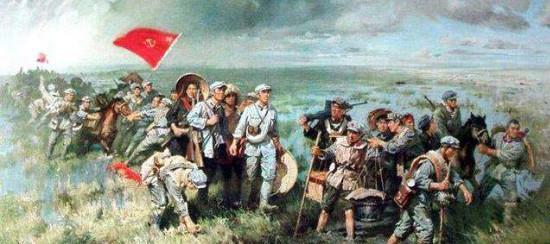We all know that the Red Army arrived in northern Shaanxi from the Long March in the south. And this Red Army did not even participate in the Long March, and it was not a guerrilla unit in the south. What is even more amazing is that we all know that in the counterattack against India's self-defense, the People's Liberation Army hammered India. And this unit not only educated India once in the counterattack against India, but also twice. This unit beyond our comprehension is the Red Army Division.

Speaking of Red Army divisions, this history is quite long. His first peculiarity was that he did not participate in the Long March and did not yet fight guerrilla warfare in the south. What is the reason for this? It was because this unit was a unit in the base area of northern Shaanxi that it was later called the Red Army Division. As we all know, after the fifth encirclement and suppression, the Red Army was forced to march. And where is the destination of the Long March? It is Yan'an, northern Shaanxi, because there is still the last base area of the Red Army here.
This unit has been stationed in northern Shaanxi since the central government reached northern Shaanxi. During the War of Resistance Against Japanese Aggression, the Yellow River was strictly guarded and the Japanese army was not allowed to take a step. After the victory of the War of Resistance, this Red Army division fought with Hu Zongnan's army in the Liberation War and finally entered Guanzhong. In addition to at home, Red Army divisions also fought abroad. During the War to Resist US Aggression and Aid Korea, the Red Army division did not directly participate in the operation because it was stationed in the northwest. Instead, more than 800 cadres were sent to North Korea. In addition to these, the most famous of the Red Army divisions was to fight India.
After the Red Army division was ordered to liberate Tibet, it was stationed on the side of the Himalayas. Here, the Red Army divisions began to engage in production on their own. Put down the gun and pick up the hoe. Occasionally, he would put down his hoe and pick up a gun and practice marksmanship with the bandits. The days slowly passed to 1962, when the Indian brothers began to be dishonest. The Sino-Indian self-defense counterattack was breaking out, and the Red Army division was called the 11th Division.
To fight the French sent a famous general Chen Geng and to fight the United Nations army to mobilize volunteers. What about hitting India? Border troops are enough. Since the Red Army division happened to be stationed in Tibet, it directly picked up its gun. The most brilliant thing about the Red Army division was the interspersed from the Bailey Trail and finally the large-scale encirclement of the Indian army.
In the early stages of the battle, our People's Liberation Army completely annihilated India's ace Seventh Brigade. However, these battles were fought by friendly forces, and the Red Army Division, as a rear unit, only one battalion participated in the battle. The biggest feature of the Red Army Division is that it can run, and this big interspersing, interspersed from the Pele Trail of the lofty mountains and mountains, is the characteristic of the Red Army Division.
At this time, the People's Liberation Army also had a lot of heavy equipment, and in order to make these equipment climb over the mountains, it disassembled and disassembled them. Then the man carried the horse through the rear of the enemy. In fact, in addition to the high mountains and long roads, it is also necessary to attack and advance. The Indian army is not undefended in these areas. Two regiments of the Red Army division defeated the opposing company-level defenses all the way, and traveled 240 kilometers through seven days of midnight, creating a miracle. After the PLA penetration was completed, the Indian army suddenly found itself surrounded. At 8:30 a.m. on November 18, 1962, the biggest battle of the counterattack against India began. In this battle, the Fourth Division of the Indian Army was surrounded and annihilated after the Red Army Division was largely interspersed. Fighting India is really simpler than fighting bandits.
Playing once is not enough, it is a second time. In 1967, the Indian army did not honestly provoke at the Tula Pass, and after being killed by our army after the artillery battle, more than 600 people were killed by our army. October 1st, this day still dare to come. After seven Indian troops were killed, it was another artillery battle. After killing more than a hundred people, the Indian army slipped away again. Since then, the Red Army division has become a nightmare for India.